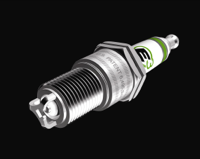
|
Cococubed.com
|
| Ignition of White Dwarf Supernova |
Home
Astronomy research
Software Infrastructure:
MESA
FLASH-X
STARLIB
MESA-Web
starkiller-astro
My instruments
Neutrino Emission:
Neutrinos from de-excitation
Neutrino emission from stars
Identifying the Pre-SN
Neutrino HR diagram
Pre-SN Beta Processes
Pre-SN neutrinos
White dwarf pulsations:
12C(α,γ) & overshooting
Probe of 12C(α,γ)16O
Impact of 22Ne
Impact of ν cooling
Variable white dwarfs
MC reaction rates
Micronovae
Novae
White dwarf supernova:
Stable nickel production
Remnant metallicities
Colliding white dwarfs
Merging white dwarfs
Ignition conditions
Metallicity effects
Central density effects
Detonation density
Tracer particle burning
Subsonic burning fronts
Supersonic fronts
W7 profiles
Massive stars:
Pop III with HST/JWST
Rotating progenitors
3D evolution to collapse
MC reaction rates
Pre-SN variations
Massive star supernova:
Yields of radionuclides
26Al & 60Fe
44Ti, 60Co & 56Ni
SN 1987A light curve
Constraints on Ni/Fe
An r-process
Effects of 12C +12C
Neutron Stars and Black Holes:
Black Hole spectrum
Mass Gap with LVK
Compact object IMF
He burn neutron stars
Stars:
Hypatia catalog
SAGB stars
Nugrid Yields I
He shell convection
BBFH at 40 years
γ-rays within 100 Mpc
Iron Pseudocarbynes
Pre-Solar Grains:
C-rich presolar grains
SiC Type U/C grains
Grains from massive stars
Placing the Sun
SiC Presolar grains
Chemical Evolution:
Radionuclides in 2020s
Zone models H to Zn
Mixing ejecta
Thermodynamics, Opacities & Networks
Radiative Opacity
Skye EOS
Helm EOS
Five EOSs
Equations of State
12C(α,γ)16O Rate
Proton-rich NSE
Reaction networks
Bayesian reaction rates
Verification Problems:
Validating an astro code
Su-Olson
Cog8
Mader
RMTV
Sedov
Noh
Software Instruments
2026 AAS Journals
AAS YouTube
Listing of 500+ Author Videos
AAS Peer Review Workshops
Outreach Material
Education Material
Other Stuff:
Bicycle Adventures
Illustrations
Presentations
Contact: F.X.Timmes
my one page vitae,
full vitae,
research statement, and
teaching statement.
The details of ignition of Type Ia supernovae remain fuzzy, despite the importance of this input for any large-scale model of the final explosion. In this article, we begin a process of understanding the ignition of these hot spots by examining the burning of one zone of material, and then we investigate the ignition of a detonation due to rapid heating at single point. We numerically measure the ignition delay time for onset of burning in mixtures of degenerate material and provide fitting formulae for conditions of relevance in the Type Ia problem. Using the neon abundance as a proxy for the white dwarf progenitor's metallicity, we then find that ignition times can decrease by d$\simeq$ ~20% with the addition of even 5% of neon by mass. When temperature fluctuations that successfully kindle a region are very rare, such a reduction in ignition time can increase the probability of ignition by orders of magnitude. If the neon comes largely at the expense of carbon, a similar decrease in the ignition time can occur. We then consider the ignition of a detonation by an explosive energy input in one localized zone, for example, a Sedov blast wave leading to a shock-ignited detonation. Building on previous work on curved detonations, we confirm that surprisingly large inputs of energy are required to successfully launch a detonation, leading to required match heads of $\approx$ 4500 detonation thicknesses -- tens of centimeters to hundreds of meters -- which is orders of magnitude larger than naive considerations might suggest. This is a very difficult constraint to meet for some pictures of a deflagration-to-detonation transition, such as a Zel'dovich gradient mechanism ignition in the distributed burning regime.

|

|

|

|

|

|

|
|